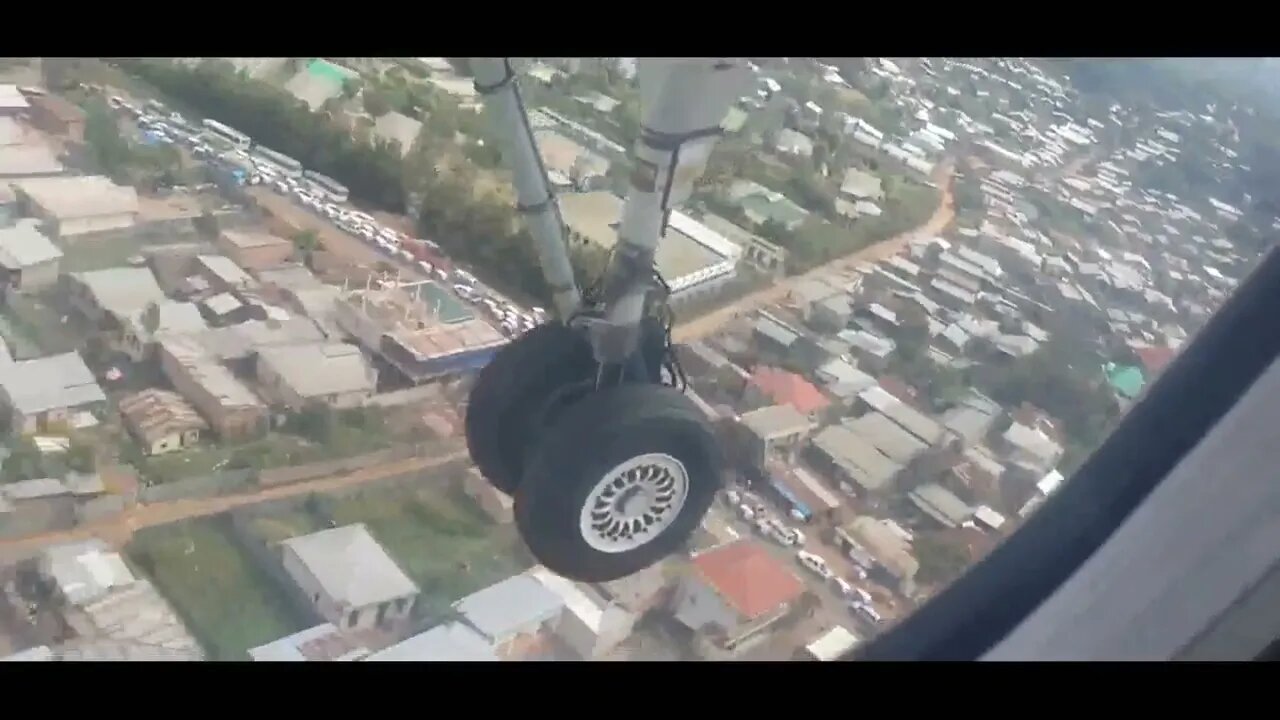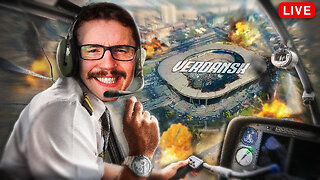Premium Only Content

Ethiopian’s Airlines domestic flight; Wheel landings & Landing Gear of an Airplane.
Ethiopian’s Airlines domestic flight; Wheel landings & Landing Gear of an Airplane
Ethiopian’s domestic route network is spread all over the country bringing provincial and administrative cities within easy reach of the capital and the region’s commercial centers. In addition, there is a daily "Historic Route Service" for tourists to the country’s world famous ancient historic sites of Axum, Bahr Dar, Gondar and Lalibela which showcase obelisks and rock-hewn churches.
Special tour programs are designed to allow visitors to choose the activities and locations that interest them most, ensuring that everyone makes the most of the time they spend there.
World famous obelisks and rock hewn churches are the main attractions of the Northern travel sites of Bahr Dar, Gonder, Lalibela and Axum. And for trekking enthusiasts, the Simien escarpments which are often compared to the Grand Canyon in the United States of America and named by UNESCO as a world heritage site is ideal.
To the east, Dire Dawa and Harar offer a blend of natural beauty and history. The Afro-alpine habitat of the south provides unlimited opportunities for mountain walks, horse trekking, scenic drives and bird watching.
Domestic Scheduled Services (23 Cities)
Addis Ababa, Arba Minch, Assosa, Axum, Bahar Dar, Bale Robe, Dembidollo, Dire Dawa, Gambella, Gonder, Gode, Hawassa, Humera, Jijiga, Jimma, Jinka,Kabri Dar, Kombolcha, Lalibela, Semera, and Shilavo
Wheel landings & Landing Gear of an Airplane
On final approach with the airplane configured for landing, the pilot tells himself he intends to fly the entire length of the runway, one foot off the ground. He thinks about flying, not landing, although intellectually he knows the engine is near idle and isn’t producing enough power to maintain level flight for more than a few seconds.
When the main wheels touch down (despite the pilot’s half-hearted effort to keep them a foot off the ground), he applies forward stick to “pin” the main gear to the runway surface. Then he reduces engine power to idle and patiently “flies” the tailwheel to the ground. Once the tailwheel touches the runway surface, full back stick and quick rudder inputs keep the airplane tracking straight ahead as it decelerates.
Why the lie?
When pilots think about landing, they often touch down with an excessive rate of descent. The tail drops, the wing's angle of attack increases, and the airplane bounces back into the air. When the pilot thinks about flying, he gradually increases back pressure on the stick and reduces the rate of descent to almost nothing. There’s little, if any, bounce—and the pilot has lots of time to apply forward stick and keep the airplane firmly on the ground.
Landing Gear
The components of an aircraft or a spacecraft that support the weight of the craft and its load and give it mobility on ground or water.
The landing gear is the principal support of the airplane when parked, taxiing, taking off, or landing. The most common type of landing gear consists of wheels, but airplanes can also be equipped with floats for water operations or skis for landing on snow.
The wheeled landing gear on small aircraft consists of three wheels: two main wheels (one located on each side of the fuselage) and a third wheel positioned either at the front or rear of the airplane.
Landing gear with a rear mounted wheel is called conventional landing gear. Airplanes with conventional landing gear are sometimes referred to as tailwheel airplanes. The two main wheels are attached to the airframe ahead of its center of gravity (CG) and support most of the weight of the aircraft. The tailwheel is located at the very back of the fuselage and provides a third point of support. This arrangement allows adequate ground clearance for a larger nose-mounted propeller and is more desirable for operations on unimproved fields. It is therefore popular with small, general aviation aircraft such as the PIPER L-18C and the C170. With the CG located behind the main landing gear (MLG), directional control is more difficult while on the ground. For example, if the pilot allows the aircraft to swerve while rolling on the ground at a low speed, they may not have sufficient rudder control and the CG will attempt to get ahead of the main gear, which may cause the airplane to ground loop. Touching down with the tailwheel may, depending on the speed, produce enough lift (due to the increased Angle of Attack (AOA)) and cause the aircraft to become airborne again. Diminished forward visibility when the tailwheel is on or near the ground is another disadvantage of tailwheel landing gear airplanes. Specific training is required to operate tailwheel airplanes.
https://www.ethiopianairlines.com/aa/book/network/domestic
Source: EUROCONTROL ATM Lexicon
Landing Gear | SKYbrary Aviation Safety
Technique - Wheel landings - AOPA
-
 LIVE
LIVE
TimcastIRL
47 minutes agoGavin Newsom Says He Will End Trump Presidency, Vows To Gerrymander California | Timcast IRL
17,991 watching -
 UPCOMING
UPCOMING
FreshandFit
1 hour agoRP Wednesday w/ Anton Daniels
18.6K -
 LIVE
LIVE
The Jimmy Dore Show
2 hours agoVoters RIP INTO Congressional Reps at Town Halls Over Gaza! Cuomo HITS Mamdani For Paying Low Rent!
11,720 watching -
 LIVE
LIVE
SpartakusLIVE
5 hours ago#1 MACHINE Can't Stop The GRIND
212 watching -
 LIVE
LIVE
Rallied
2 hours ago $0.13 earnedWarzone Solo Challenges All Day w/ Ral
101 watching -
 LIVE
LIVE
GrimmHollywood
6 hours ago🔴LIVE • GRIMM HOLLYWOOD and SOUNDBOARDLORD are SO COOL • COD MOBILE 100 KILL CHALLENGE •
105 watching -
 LIVE
LIVE
MissesMaam
5 hours agoVariety Stream💚✨
105 watching -
 LIVE
LIVE
ZWOGs
5 hours ago🔴LIVE IN 1440p! - Kingdom Come Deliverance, Games w Maam, Nuclear Nightmare & More - Come Hang Out!
33 watching -
 LIVE
LIVE
Melonie Mac
1 hour agoGo Boom Live Ep 59!
192 watching -
 45:07
45:07
MattMorseTV
2 hours ago $4.56 earned🔴Tulsi just DROPPED a BOMBSHELL.🔴
13.4K10